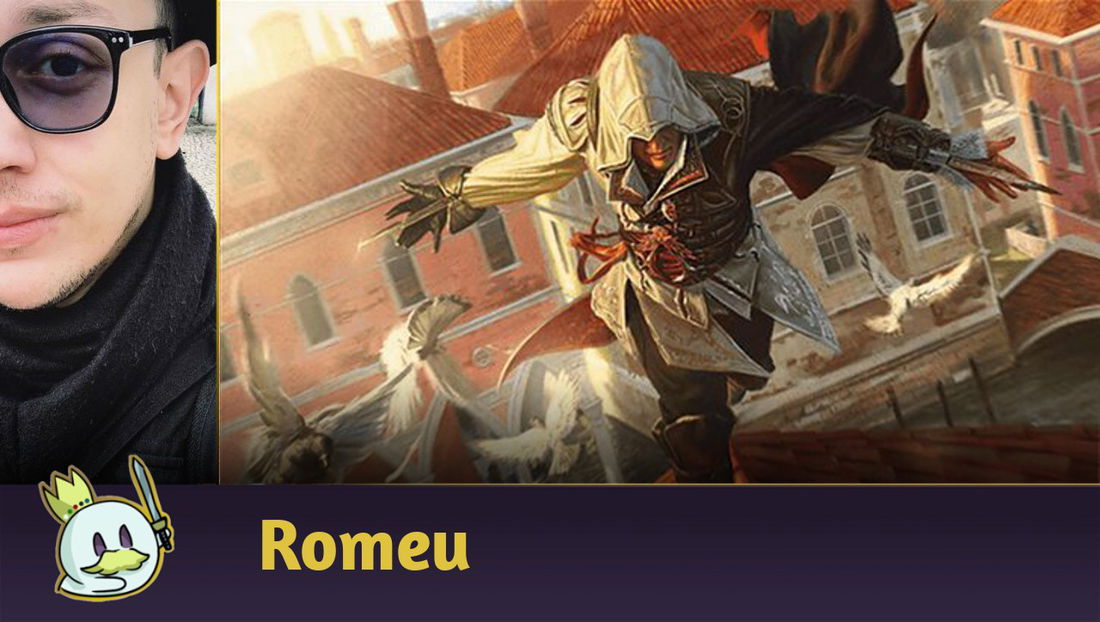What are Planeswalkers?
Planeswalkers, or Planeswalkers, are the central figures in Magic: The Gathering. They are the characters who move the narrative of the game's lore and, naturally, those who star in the main events of the story.
Most of them are individuals from specific worlds who, through certain events - commonly traumatic - ignited their spark and transported themselves to another world in the Multiverse, known as Planes. Each Planeswalker has its own abilities and objectives, but they have in common the ability to teleport to other Planes, traveling between them during their journeys.
Ad
This was an ability unique to them, with other peoples, such as the Fomori, needing to resort to powerful devices to obtain the same results, but after March of the Machine, the fabric of the Blind Eternities - the space existing between a Plane and another - was altered, creating Omenpaths, “tunnels” that connect one plane to another and allow ordinary people to travel to other worlds.
Furthermore, as revealed in the same arc, Planeswalkers can lose their sparks, as occurred with Nissa, Resurgent Animist and the brothers Rowan, Scion of War and Will, Scion of Peace. The reasons behind this loss are still unknown, but Teferi, one of the most famous characters in Magic lore, speculates that this is a consequence of the Multiverse trying to heal from the damage caused by the Phyrexian Invasion and the detonation of The Filigree Sylex.
The 10 Best Planeswalkers in MTG
Check out the ten best Planeswalker cards in Magic: The Gathering below, categorized by their individual power level, history in the game and impact on the main competitive formats!
10 - Liliana of the Veil

Previously considered the second best Planeswalker of all time, Liliana of the Veil lost her place with power creep. Today, this Planeswalker appears mainly in Pioneer in decks such as Rakdos Midrange, Waste Not and some Vampires lists, while its space in eternal formats has become quite limited, with only occasional appearances in the Sideboard.
However, we cannot deny Liliana's long history in the game, much less disregard how she is still one of the most efficient Planeswalkers ever released, being essential for disruptive strategies and an excellent Meta Call against certain decks.
9 - Teferi, Hero of Dominaria

There was a time not too long ago where Teferi, Hero of Dominaria was called the “new Jace, the Mind Sculptor” and was present in Control decks in almost every competitive format where it was legal - and its space in Modern, for example, was not replaced by another Planeswalker, but by a much more efficient value engine with The One Ring.
Still, the first Planeswalker version of Teferi is the complete package of what a win condition for 
8 - Narset, Parter of Veils

War of the Spark was the trigger for the F.I.R.E. philosophy, a change in the design searching for making cards more exciting and interesting to play across all rarities - consequently, the set had the first uncommon Planeswalkers in the game's history.
Among them, Narset, Parter of Veils stood out and continues to stand out for its ability to stop cantrips and card advantage effects, in addition to having interactions with symmetrical effects that make both players draw cards, leading a combo in the Pioneer, Modern and Legacy with Day's Undoing and similar effects, while it is also present in the maindeck and sideboard of various Control decks.
Ad
7 - Jace, the Mind Sculptor

Few cards have as striking a historical precedent as Jace, the Mind Sculptor: Worldwake's Planeswalker dominated the Standard Metagame alongside Stoneforge Mystic to the point of causing the format's first ban in years, in addition to being pre-banned from Modern.
While it remained a Legacy staple for years, Jace was unbanned from Modern in 2017, where it eventually made some impact, but given the power creep, it wasn't as prevalent in the Metagame as it was in its Standard days.
Like other Planeswalkers on the list, this one stands out for its mix of versatility, card advantage, interaction with other cards and its ability to win games on its own with its ultimate, making it still relevant in some Control decks, in addition to being a Sideboard card in some lists for attrition games.
6 - Minsc & Boo, Timeless Heroes

Minsc & Boo, Timeless Heroes is another Planeswalker that offers a complete package: the token it creates when it comes into play quickly becomes a 4/4 with its first ability and a win condition if it stays in play for too long. At the same time, its second ability interacts with large creatures, offers card advantage and can even create some “combo-kills”, as some versions of Dark Depths decks did in Legacy for some time.
5 - The Wandering Emperor

Versatility is essential for Planeswalkers to be competitively viable, and The Wandering Emperor is a step ahead of the other options due to the possibility of casting it at any time in the game, in addition to its abilities serving as removal, protection and combat trick, providing a vast range of options.
The Wandering Emperor has remained a Standard staple throughout its time in the format, and is prominently played in Pioneer and even in some Control lists in Legacy.
4 - Karn, the Great Creator

If versatility is a keyword to define good Planeswalkers, what about one that is as efficient as the cards in your Sideboard?
Karn, the Great Creator has become a multi-format staple since its release, led to the banning of Mycosynth Lattice in Modern, established the best and most efficient Big Mana in Pioneer history to the point of needing to be banned from the format and today remains essential in Modern, where, recently, it has starred in the combo of Emrakul, the World Anew with The Underworld Cookbook on Tron.
Its ability to search for artifacts from outside the game essentially makes the Sideboard an extension of the maindeck and allows for the famous “toolbox”, where one piece of each card is used for varied situations, without the need to create deckbuilding or consistency concessions when finding them - in addition to guaranteeing access to them on the Game 1.
3 - Wrenn and Six

Unlike some of the cards above, Wrenn and Six is not as efficient in terms of protecting itself or generating card advantage, fitting more into the utility content of their respective decks, but it has an even more aggravating factor when we mention Planeswalkers in a game: the ability to make the game revolve around it.
Ad
Its first ability interacts directly with Fetch Lands and other utility lands, which eventually led to its ban in Legacy due to its ease in dealing with small creatures and the means it offered to reuse Wasteland in Delver decks.
Wrenn and Six also has another powerful interaction with graveyards through its ultimate, which was often used with Lightning Bolt and other cards in Legacy as a source of recurring damage. In Modern, it teams up with Urza’s Saga to reuse it over and over as a wincondition, or also in the famous goodstuff stacks to ensure consistency in access to colors.
2 - Teferi, Time Raveler

Teferi, Time Raveler practically changes, on its own, the game's very rhythm. Its passive ability is so powerful that it led to its ban in Standard and Pioneer, while the card is commonly treated as a “necessary evil” in Modern and Legacy to prevent more degenerate strategies from running freely in the Metagame.
This card is also known for its ability to generate a lot of value in combination with ETB effects. In Modern, for example, it's common to use his abilities to reset The One Ring and cast it again, or return Solitude to exile another creature.
Teferi is also used by some Combo decks to protect itself from opponent interaction while performing its plays, with recent examples in the Indomitable Creativity and Nadu, Winged Wisdom lists, making it extremely versatile in both protecting yourself from certain combos, such as Cascade, while also protecting other combos from counterspells and removals.
1 - Oko, Thief of Crowns

Oko, Thief of Crowns certainly left a permanent mark on Magic history. During Throne of Eldraine's preview season, he was considered inefficient by many players, but after the launch of the set in 2019, Oko took over format after format until he reached the point of being present as the main threat to the Metagame of them all.
The reason may not be apparent from reading the card's abilities: Oko, upon entering play, makes almost every fair game resolve around him all the time. The opponent's creatures can be invalidated and become 3/3 Elks without abilities, aggressive decks can't race because it offers 3 life every turn, and it comes into play too soon and with too high a loyalty to deal with through damage removal or combat damage.
These qualities and the way he demanded very immediate responses soon led to Oko being banned from each of Magic's main competitive formats - and today, the only places where he is legal are in Vintage and Timeless, where he shares space with other of the most powerful cards of all time, such as Necropotence and Lurrus of the Dream-Den.
Conclusion
That's all for today!
If you have any questions or suggestions, feel free to leave a comment!
Thanks for reading!









— Comments0
Be the first to comment